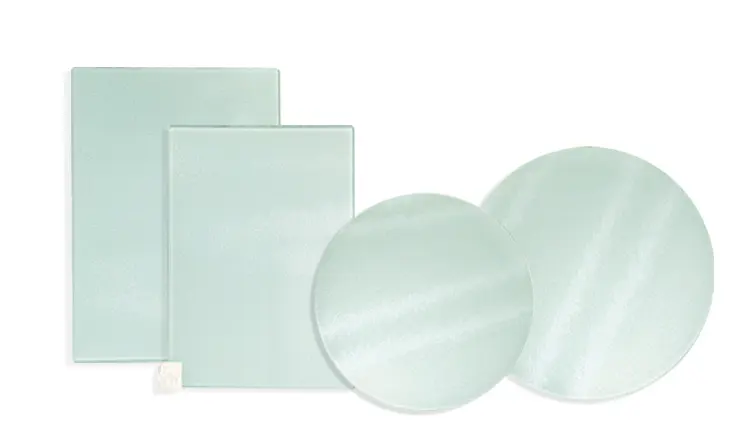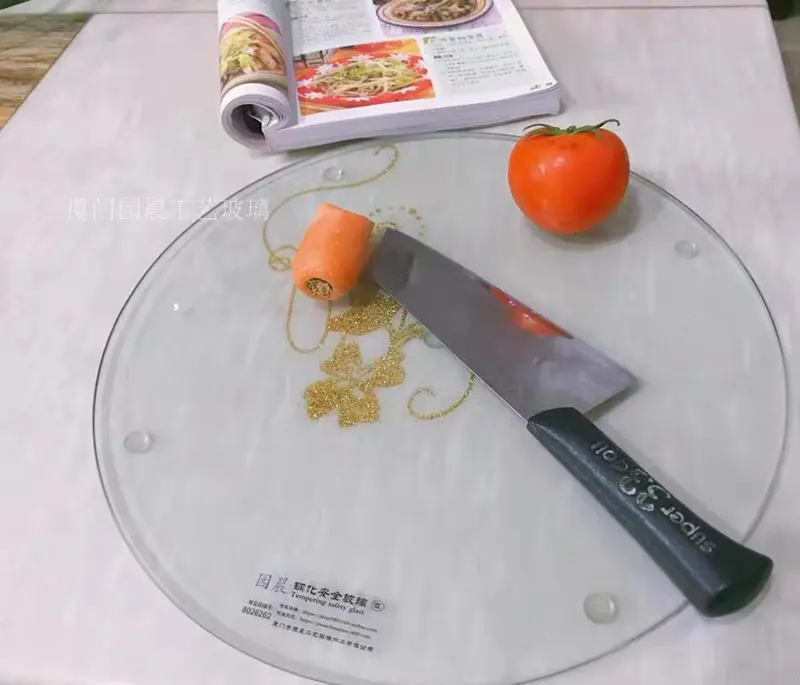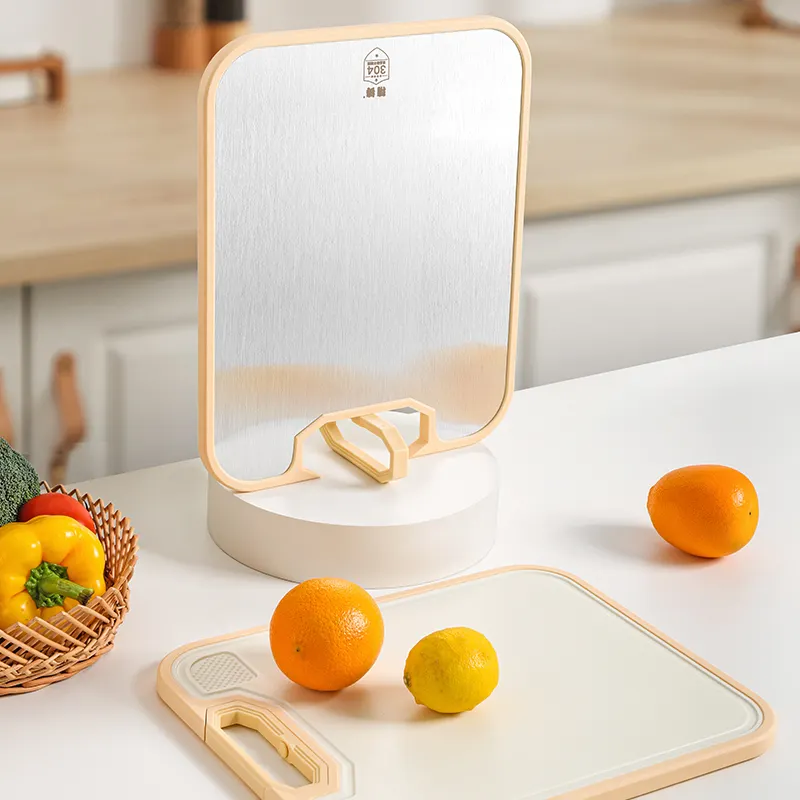Glass cutting boards have both advantages and disadvantages, and understanding these can help you make an informed decision based on your specific needs and preferences. Here are the pros and cons of glass cutting boards:
Pros:
- Sleek and Modern Aesthetics:
- Glass cutting boards have a sleek and modern appearance that adds a touch of sophistication to the kitchen. They come in various designs and colors, allowing for personalization.
- Non-Porous Surface:
- Glass is non-porous, making it resistant to bacteria, odors, and stains. This feature enhances hygiene and makes glass cutting boards easy to clean and sanitize.
- Heat-Resistant:
- Glass cutting boards are heat-resistant, allowing them to withstand hot pots and pans. This makes them versatile for use as trivets or serving platters for warm dishes.
- Easy to Clean:
- Glass cutting boards are easy to clean and can be washed in the dishwasher. Their smooth surface minimizes the risk of food particles getting trapped, simplifying maintenance.
- Versatility:
- Glass cutting boards are versatile and can be used for cutting a variety of foods, including fruits, vegetables, meats, and more. They can also be used for rolling out dough.
- Decorative Options:
- Many glass cutting boards come in decorative patterns or have vibrant designs. This allows users to choose cutting boards that match their kitchen decor or add a personalized touch.
- Transparency:
- The transparency of glass cutting boards provides a unique visual appeal, allowing users to see the countertop underneath. This adds to the overall aesthetics of the kitchen.
- Resistant to Odors and Stains:
- Glass cutting boards resist odors and stains, ensuring a clean and fresh appearance over time. This contributes to their long-lasting elegance.
Cons:
- Prone to Chipping or Breaking:
- Glass cutting boards can be more prone to chipping or breaking, especially if subjected to heavy impacts. Care should be taken to avoid dropping heavy objects onto them.
- Hard on Knife Blades:
- Glass is a hard material, and using it as a cutting surface can be tough on knife blades. This can lead to quicker dulling of knives compared to softer cutting board materials.
- Can Cause Noise:
- Cutting on a glass surface can produce more noise compared to softer materials like wood or plastic. This can be a consideration for those who prefer a quieter kitchen environment.
- Limited Cushioning:
- Glass provides minimal cushioning for knives, which can affect the longevity of knife sharpness. Softer cutting board materials may offer better protection for knife blades.
- Cold Surface:
- Glass cutting boards can be cold to the touch, which might be uncomfortable for some users, especially during winter months.
- Less Forgiving for Glassware:
- Dropping glassware or delicate utensils onto a glass cutting board may result in breakage due to the hardness of the surface.
- Not Ideal for Heavy-Duty Tasks:
- Glass cutting boards may not be the best choice for heavy-duty cutting tasks, such as butchering large cuts of meat, as they can be more prone to damage.
- Limited Flexibility:
- Unlike flexible cutting boards, glass cutting boards lack flexibility, making it challenging to transfer chopped ingredients easily.
When considering a glass cutting board, it’s essential to weigh these pros and cons against your specific cooking habits, maintenance preferences, and the overall aesthetic you want to achieve in your kitchen.



